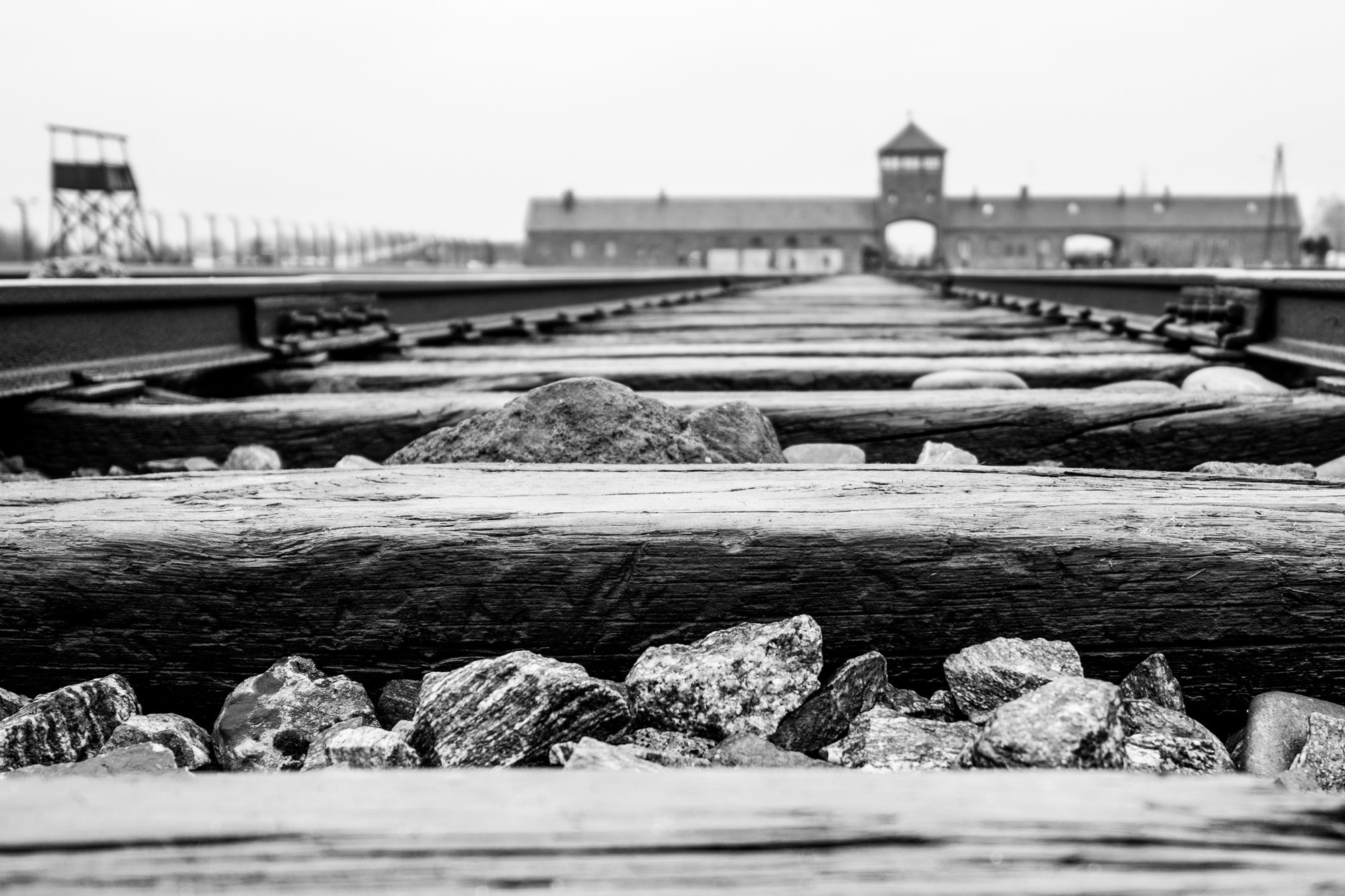
The largest of the SS concentration camps existed at the Auschwitz complex – a network of 2 large camps and 45 other satellite camps within a couple of miles of each other. The seed was sown at what is known as Auschwitz I, which is fairly intact even today and was mainly meant for Polish and German political prisoners. The largest camp was at Birkenau (Auschwitz II) spread over a sprawling emptiness and housing more than 300 barracks.
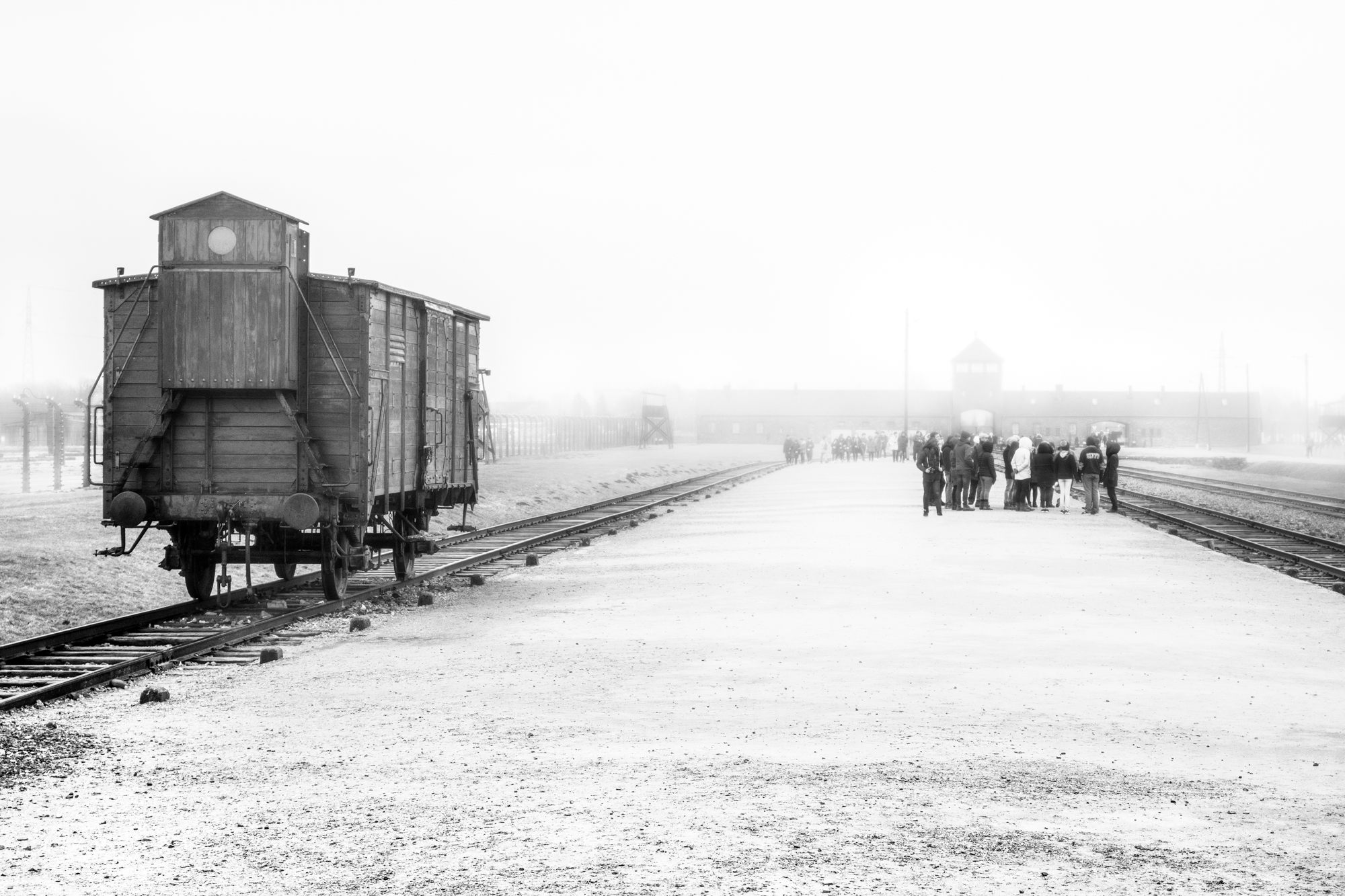
During our visit to Auschwitz, we had stayed overnight in the curious town of Katowice (we can chat more about Katowice when we meet for beer). It was an industrial town where quite a bit of money has flown in recently leading to a glitzy-kitschy appeal, in some ways reminding us of Trump’s golden Towers.
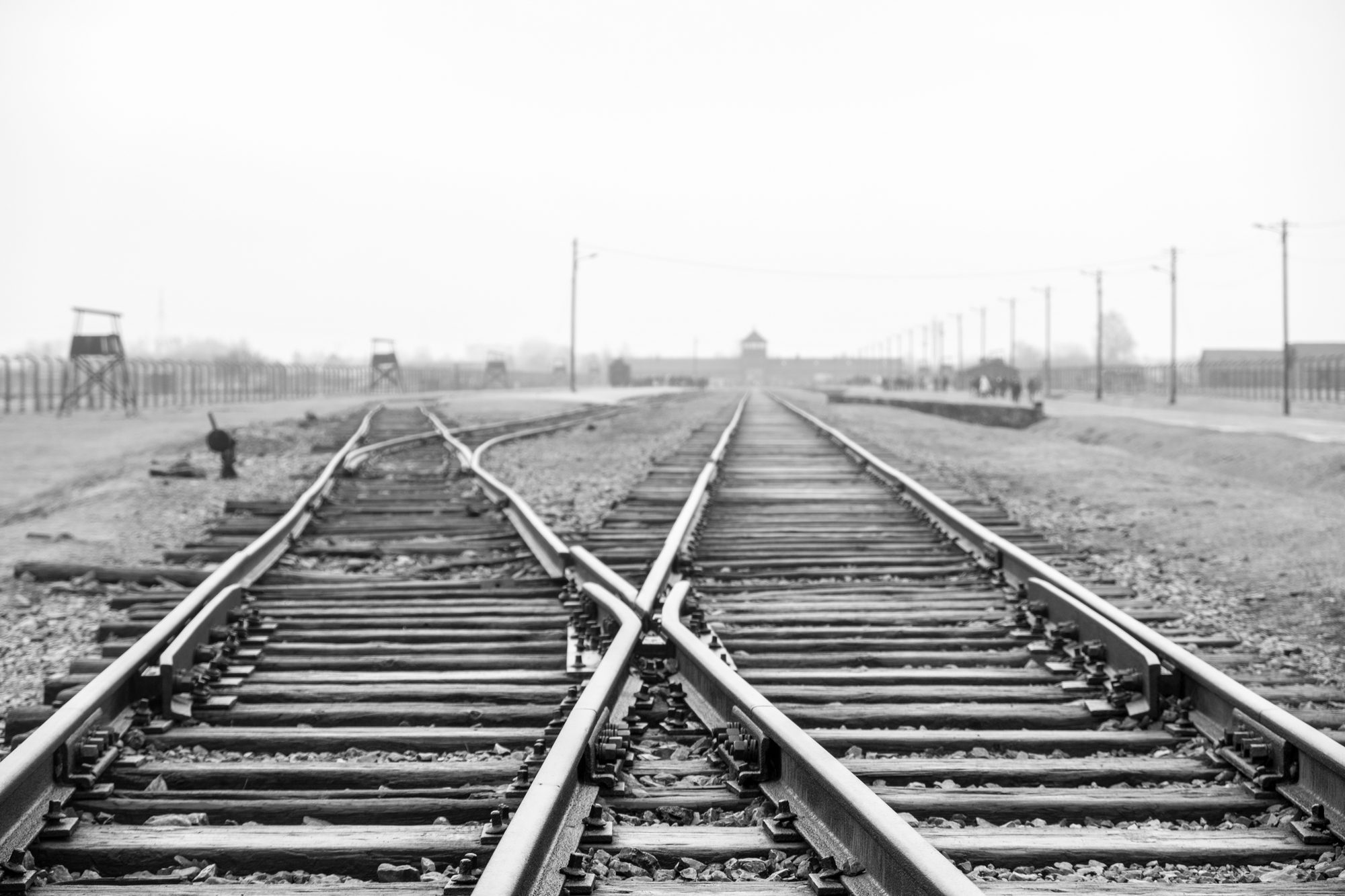
The next morning, as we drove towards Auschwitz in the wide open countryside, we could see train tracks leading into much-neglected modern day Oswiecim. The Auschwitz-Birkenau site was carefully chosen because of its remoteness and efficiency – as Auschwitz was a major train junction with more than 44 railway tracks converging here in parallel from all over the region. The derelict buildings and graffiti-lined railway station exists to this day, but so does a McDonald’s which seemed to be the hippest hangout place for the local teens.
We drove into Auschwitz on a gusty-windy New Year’s Eve morning (December 31st) 2017, but with the sight of more than 30 tourist buses lined up in the lot. Apparently, its 10 times worse in summer. There were notices and warnings that sights and sounds in the camp would not be suitable for children under 13, but our rationale was that kids their age (9 and 12) have been through the atrocities here, and are still going through similar atrocities all over the world today. In light of that, witnessing a visual blast of such realities is a safe reminder to what can happen to anyone at any time due to irrational thinking by a select few.
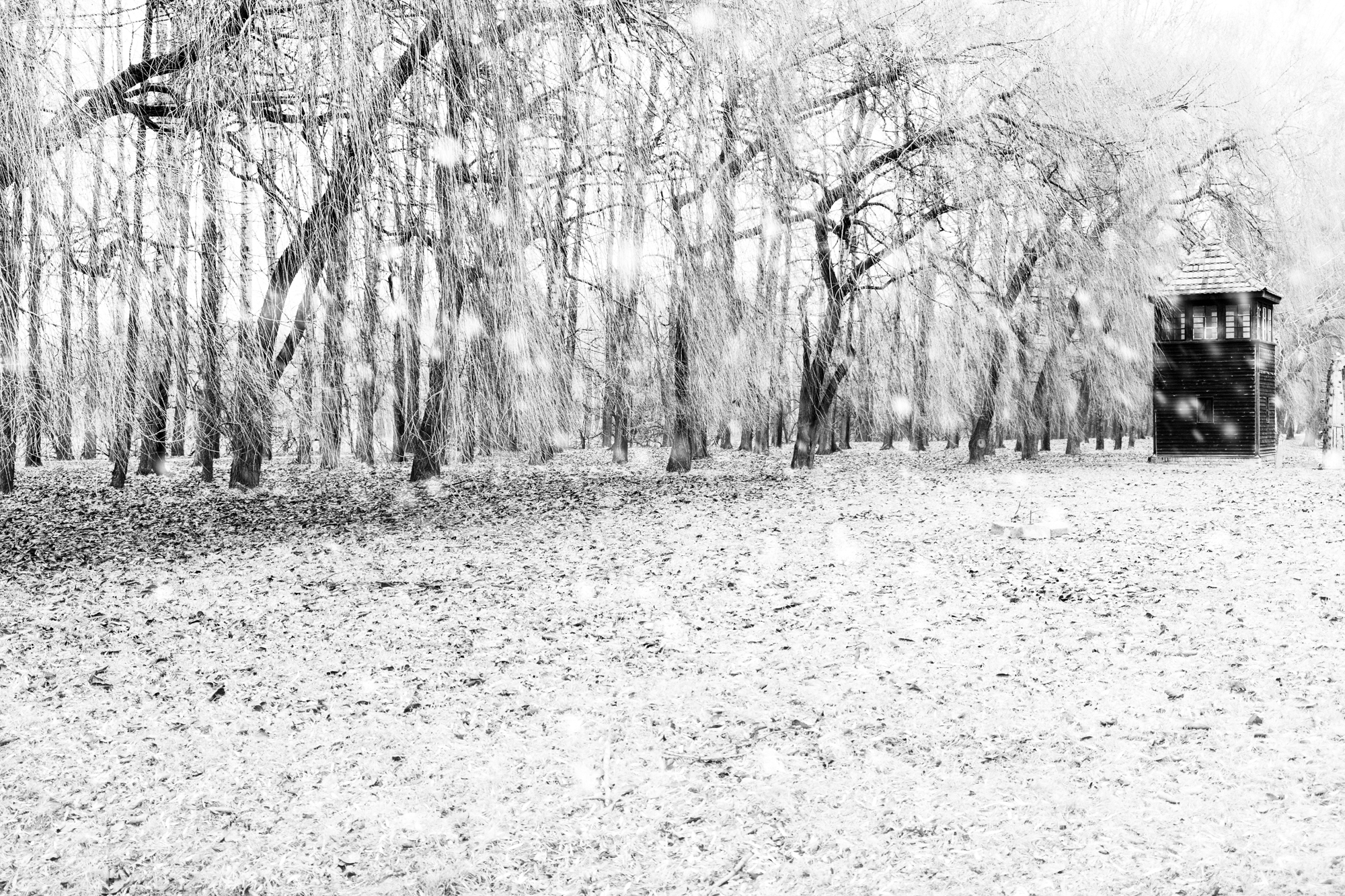
As the Allied forces (from the West) and the Red Army (from the East) squeezed the SS, they abandoned all the concentration camps, destroying every trace of any activities they had carried out in those camps. During the process, they moved all prisoners from the camp being razed behind, and made them march towards a different concentration camp – a process now referred to as the Death March. Naturally, the largest death march in World War II was from Auschwitz-Birkenau to Loslau as the Soviet Red Army advanced from the east in bitter-cold January 1945. Nine days before the Soviets arrived, the SS marched nearly 60,000 prisoners out of the camp towards modern day Wodzisław Śląski in temperatures as low as −20 °C/−4 °F.
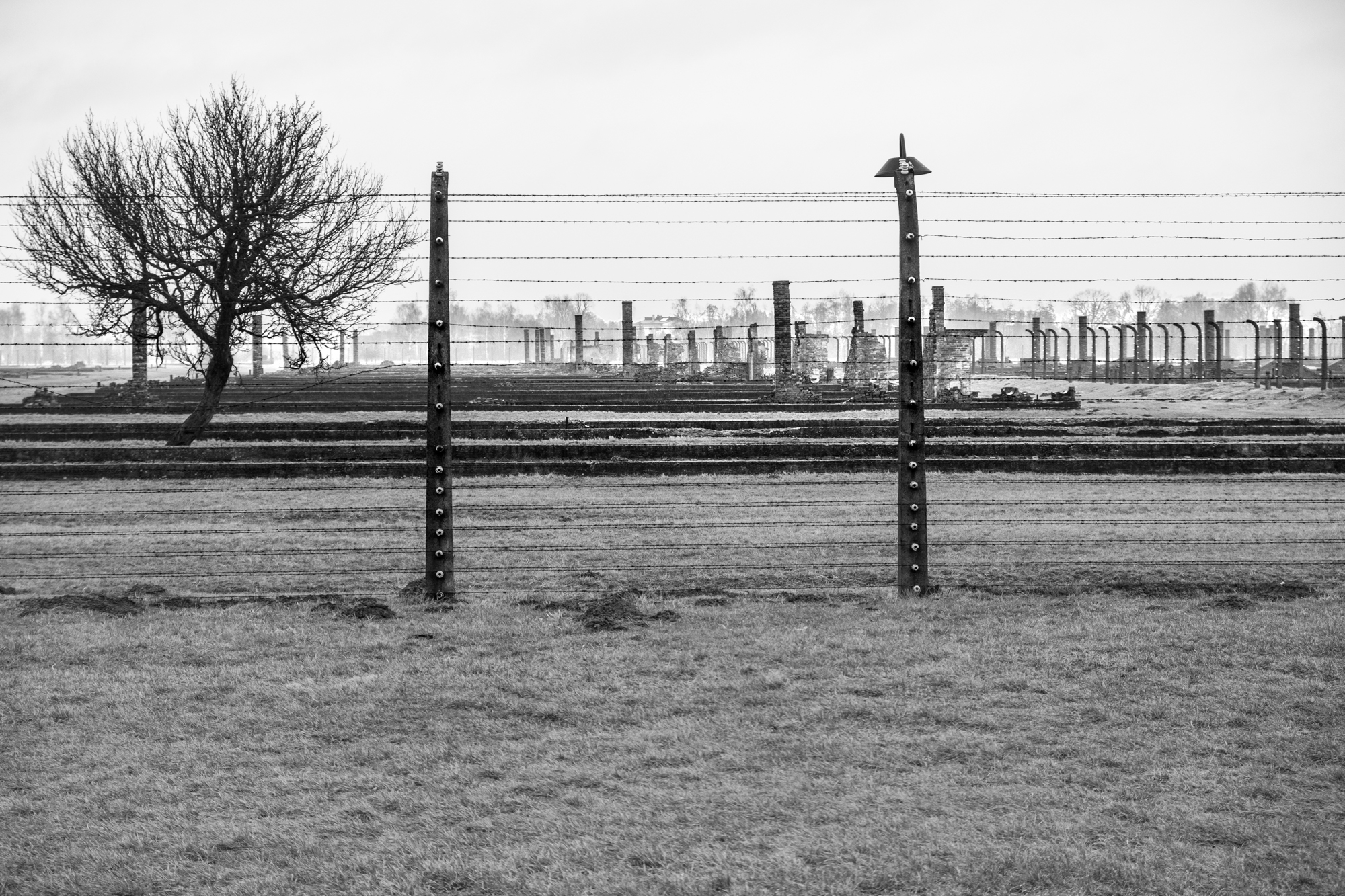
As we walked out into the open fields at Birkenau, with temperatures hovering around 32 °F, wind gusts of up to 22 mph, and intervals of freezing rain and snow, in our modern overstuffed jackets, we got a very cursory taste of what it might have been like on January 18th, 1945 for the prisoners on their Death March across almost 40 miles.
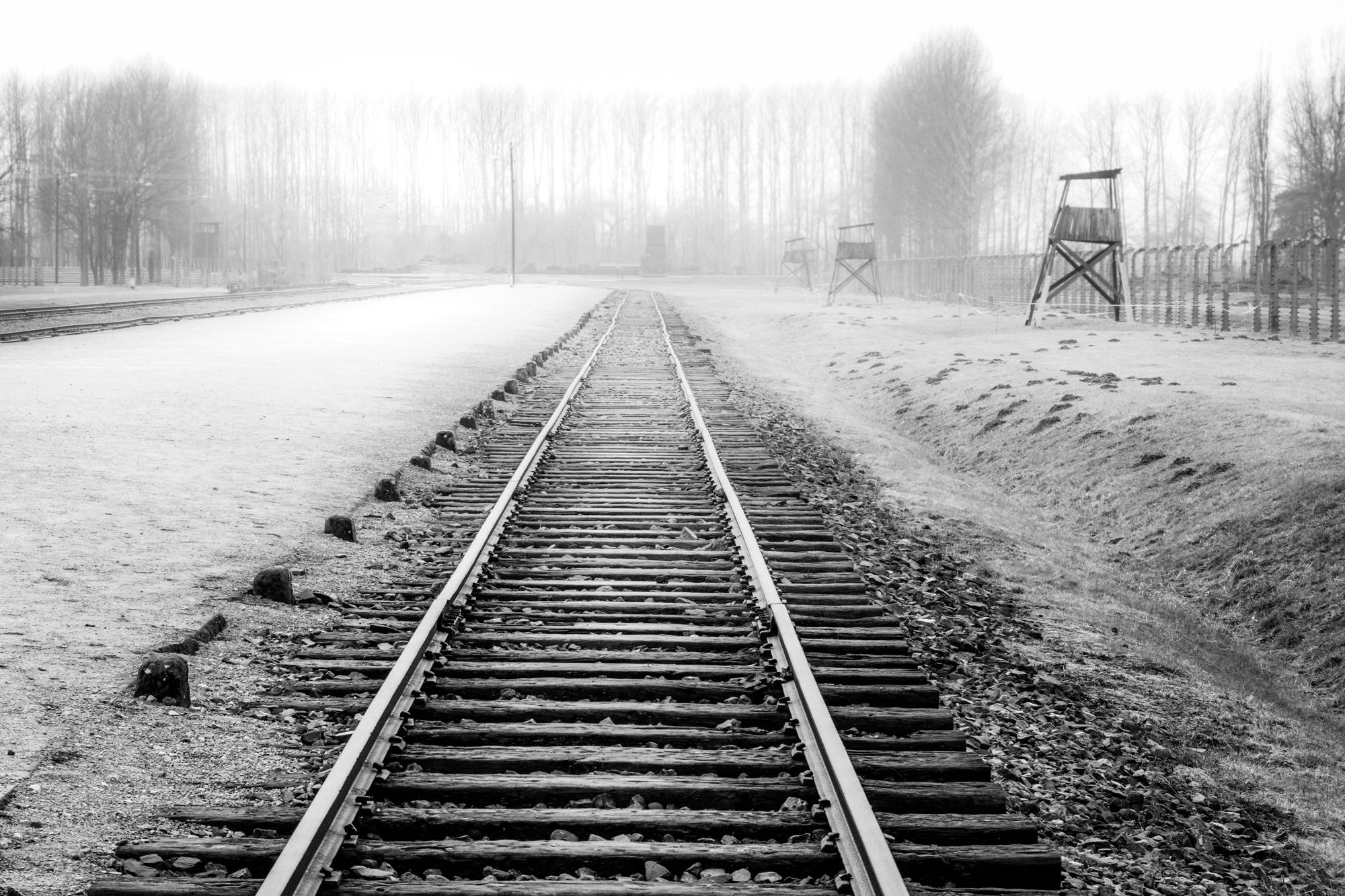
Approximately 15,000 prisoners died on that Death March due to starvation, cold, exhaustion or being shot for not keeping up the pace, and the rest were placed on trains to destinations unknown. When the Red Army arrived in Birkenau, only about 7600 prisoners were left behind.
Modern day Wodzisław Śląski has been skipped from everyday memory by the newly built (in 2014) A1 which is the lifeline for most of Poland, connecting it North to South. As we zipped on the A1 between Ostrava and Katowice, with it’s stark metal overpasses and green exit signs that reminded us of US Freeways, there was no hint anywhere of this Death March and it’s associated memorial.



